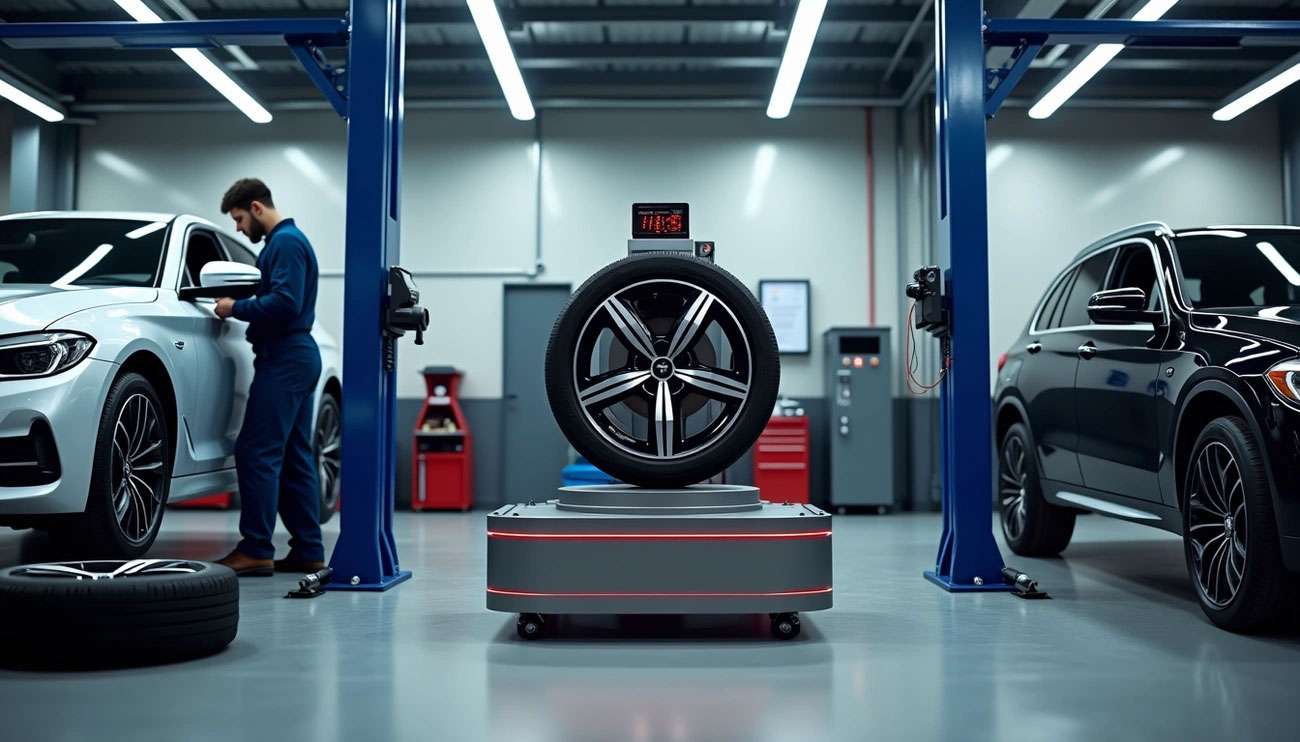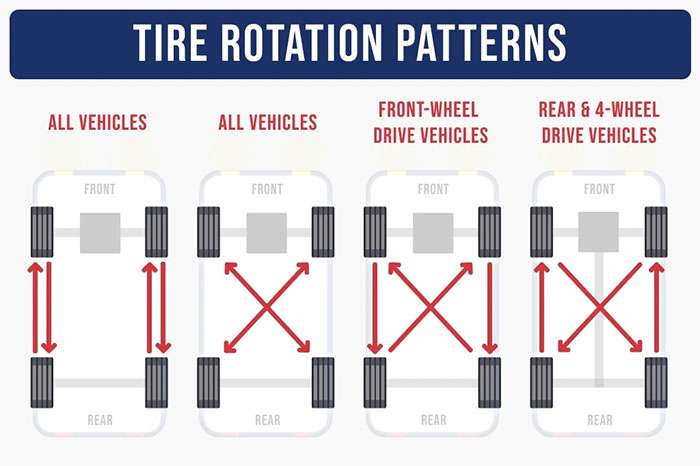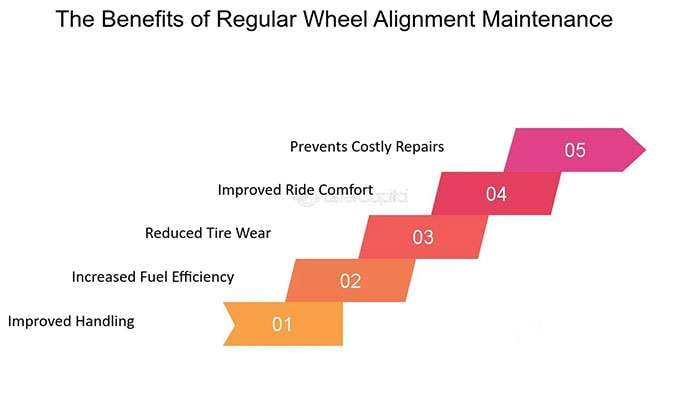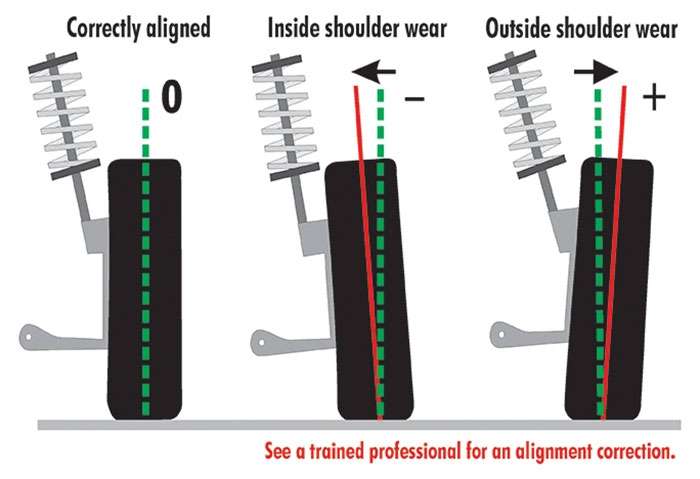
Tire alignment, rotation, and balancing are three distinct services that keep your tires performing at their best. Many vehicle owners confuse these essential maintenance procedures, but understanding the differences can save you hundreds of dollars and extend your tire life significantly.
Each service addresses specific tire and vehicle needs. Proper wheel alignment extends tire life, improves gas mileage, and ensures predictable handling. Balanced wheels provide a smooth ride by reducing tire wear, increasing fuel efficiency, and minimizing suspension strain. We recommend tire balancing every 5,000 to 6,000 miles, alignment checks every 6,000 miles or twice yearly, and tire rotation every 5,000 to 8,000 miles.
Neglecting these services creates costly problems. Misaligned wheels can cut tire life by thousands of miles and damage steering and suspension components. Unbalanced tires cause uncomfortable rides, premature wear, and suspension damage. Regular maintenance with qualified technicians protects your investment and keeps your vehicle safe.
Our guide explains exactly when your vehicle needs each service and how these maintenance procedures work together to maximize tire performance and longevity.

Image Source: Gotire
Understanding these three maintenance procedures is essential for proper vehicle care. Each service targets different aspects of tire performance, but they work together to maximize tire life and vehicle safety.
Tire rotation moves tires from one position to another on your vehicle to create even tread wear across all four tires. Front and rear tires experience different stress patterns during normal driving. Front-wheel-drive vehicles put extra strain on front tires, which handle acceleration, braking, and steering, causing accelerated wear on tire edges. Rear-wheel-drive vehicles create more wear on rear tires due to power delivery from the engine.
The concept is straightforward - tires left in the same position develop wear patterns from repetitive forces. Regular rotation redistributes these forces, preventing premature replacement of just two tires. Most vehicle manufacturers specify rotation every 5,000-8,000 miles or during routine oil changes. This simple practice extends overall tire life, maintains consistent traction, and preserves balanced vehicle handling.
Wheel balancing addresses uneven weight distribution in the tire and wheel assembly by strategically placing small metal weights. Manufacturing variations and road damage create these imbalances over time. Extended storage periods also contribute to the problem, as tires develop flat spots that affect balance.
The balancing process uses specialized equipment to identify problem areas. Technicians mount each tire and wheel assembly on a machine that spins at various speeds to detect imbalances. The machine calculates exactly where to place weights and how much weight is needed for perfect balance. Proper balancing eliminates vibrations, reduces irregular tire wear, and protects suspension components from damage.
Wheel alignment differs from the other services because it adjusts your vehicle's suspension system rather than the tires themselves. This service ensures your wheels maintain proper angles relative to each other and the road surface.
Three critical angles determine proper alignment: camber measures wheel tilt when viewed from the front, caster measures steering axis tilt from the side, and toe measures how wheels point relative to each other. Correct alignment distributes your vehicle's weight evenly across all tire surfaces, eliminating uneven wear patterns and extending tire life. Properly aligned wheels also reduce rolling resistance, which improves fuel efficiency and ensures your vehicle handles predictably in all driving conditions.
Spotting the warning signs early prevents costly tire damage and keeps your vehicle running smoothly. Each service addresses different problems, and recognizing these symptoms helps you schedule the right maintenance at the right time.
Uneven tread wear between your front and rear tires signals it's rotation time. Front tires wear faster in front-wheel-drive vehicles because they handle steering, braking, and acceleration. Watch for unusual vibrations at highway speeds, which often indicate uneven wear patterns. Your vehicle pulling slightly to one side or decreased fuel efficiency also points to rotation needs. Listen for excessive road noise or humming sounds, especially from specific wheel positions.
Vibration tells the story with unbalanced tires. Steering wheel vibrations that worsen at highway speeds indicate front tire imbalance, while vibrations in your seat or floorboard point to rear tire problems. The location of the vibration helps technicians identify which tires need attention. Uneven tread wear patterns and consistent thumping sounds at regular intervals also signal balancing issues.
Misalignment creates obvious handling problems. Your vehicle consistently pulling to one side or an off-center steering wheel when driving straight means alignment service is needed. Squealing tires during normal cornering, rapid or uneven tread wear, and steering wheel vibration during turns all indicate alignment problems. Poor handling when braking or turning also suggests your wheels need adjustment.
Service intervals provide a preventive maintenance schedule. Rotate your tires every 5,000-8,000 miles or with every other oil change. Balance wheels when installing new tires, then every 5,000-7,000 miles or during tire rotation. Check alignment annually or every 6,000 miles, plus immediately after hitting potholes or curbs.

Image Source: FasterCapital
Proper tire maintenance delivers significant financial benefits that extend far beyond basic vehicle care. Each service provides unique advantages that protect your investment while enhancing your driving experience.
Regular tire rotation creates even tread wear across all tires, extending their lifespan significantly. New tires especially benefit from rotation, as fresh tread is more susceptible to uneven wear patterns. This practice redistributes wear forces, maintaining consistent traction and handling across all four tires.
Front-wheel-drive vehicles see the most dramatic benefits. Front tires typically deteriorate almost 50% faster than rear tires without rotation. Regular rotation prevents this accelerated wear, saving you hundreds of dollars in premature tire replacement costs. The practice also enhances fuel efficiency by reducing rolling resistance from uneven tread.
Properly balanced wheels eliminate vibrations that affect both comfort and costly vehicle components. Bridgestone testing shows proper wheel balancing reduces steering vibration by up to 10%. Balanced wheels create less rolling resistance, improving fuel efficiency while preventing premature component failure.
Highway driving becomes more comfortable with balanced tires. They maintain better stability at high speeds, reducing driver fatigue during long trips. Most importantly, this service protects expensive suspension components from excessive stress caused by continuous vibrations.
Correct wheel alignment delivers impressive fuel economy benefits. Studies show misaligned wheels can reduce fuel efficiency by up to 10%. The USEPA confirms that wheel misalignment leads to approximately 7% decrease in fuel economy.
Properly aligned wheels roll with minimal resistance, requiring less engine power and reducing fuel consumption. Beyond fuel savings, alignment dramatically improves vehicle handling and stability, particularly during turns and emergency maneuvers. You'll also experience less driver fatigue as alignment eliminates the vehicle's tendency to pull to one side.

Image Source: Pasadena Auto Repair
Choosing the right tire service depends on understanding what each procedure accomplishes and when your vehicle needs it most. Here's how these three services stack up against each other.
Each service tackles different tire problems using distinct approaches. Tire rotation physically moves tires between positions to distribute wear evenly across all four tires. Wheel balancing adds small metal weights to correct weight distribution problems that cause vibrations. Wheel alignment adjusts your vehicle's suspension components to position wheels at proper angles relative to the road and each other.
Most tire shops can complete all three services during a single appointment lasting approximately one hour. Many shops include free tire rotation (46%) and balancing (44%) when you purchase new tires. Service scheduling varies based on driving conditions - rotation every 5,000-8,000 miles, balancing when vibrations occur or with new tire installation, and alignment annually or after hitting potholes or curbs.
The three services work together to maximize your tire investment. Rotation prevents the uneven wear that shortens tire life. Balancing eliminates vibrations that damage suspension components and create irregular tread patterns. Alignment ensures proper weight distribution across all tires while improving fuel efficiency and handling. Combined, these services help you avoid the 14% of tire problems that result in premature replacement.
Understanding these key differences helps you make informed maintenance decisions for your vehicle. Here's how tire rotation, balancing, and alignment compare across the most important factors:
Service Type |
Tire Rotation |
Wheel Balancing |
Wheel Alignment |
What It Does |
Moves tires to different positions for even tread wear |
Corrects weight distribution in tire/wheel assemblies |
Adjusts suspension angles for proper wheel positioning |
Service Schedule |
Every 5,000-8,000 miles or during oil changes |
Every 5,000-6,000 miles |
Every 6,000 miles or twice yearly |
Warning Signs |
- Uneven tread wear front to rear |
- Steering wheel vibration |
- Vehicle pulls to one side |
Key Benefits |
- Extends tire lifespan |
- Eliminates vibrations |
- Fuel efficiency gains up to 10% |
How It Works |
Moving tires between different vehicle positions |
Specialized machine measures imbalances and adds weights |
Adjusting camber, caster, and toe wheel angles |
This reference guide helps you identify which service your vehicle needs based on the symptoms you're experiencing and the maintenance schedule for optimal tire performance.
Regular tire rotation, balancing, and alignment work together to maximize your tire investment and vehicle safety. Each service tackles different maintenance needs - rotation prevents uneven wear patterns, balancing eliminates vibrations, and alignment ensures proper wheel contact with the road.
Recognizing the warning signs saves money and prevents premature tire replacement. Uneven tread wear signals rotation needs, steering wheel vibrations indicate balancing issues, and vehicle pulling suggests alignment problems. Address these symptoms promptly to avoid costlier repairs down the road.
The financial benefits make these services worthwhile investments. Rotation extends tire life by distributing wear evenly, balancing protects expensive suspension components from vibration damage, and proper alignment boosts fuel efficiency by up to 10%. These modest maintenance costs pale compared to early tire replacement expenses.
These services complement rather than replace each other. Balanced tires still need rotation to prevent uneven wear, while aligned wheels can't fix weight distribution problems. Most tire shops can perform all three services during one visit, making comprehensive tire maintenance both convenient and cost-effective.
Smart vehicle owners view tire maintenance as protection for their investment. The small expense of regular service prevents the much larger costs of premature tire replacement and potential safety issues. Understanding when your vehicle needs each service helps you make informed decisions that save money while keeping your car performing safely and efficiently.
At Performance Plus Tire, our experienced technicians can assess your specific maintenance needs and provide expert service that extends your tire life and improves your driving experience.
Understanding the differences between tire rotation, wheel balancing, and alignment helps you maintain optimal tire performance and avoid costly premature replacements.
• Tire rotation every 5,000-8,000 miles prevents uneven wear by moving tires between positions, extending tire life significantly • Wheel balancing corrects weight distribution using specialized machines and weights, eliminating vibrations that damage suspension components • Wheel alignment adjusts suspension angles to ensure proper road contact, improving fuel efficiency by up to 10% and enhancing handling • Warning signs differ for each service: uneven wear indicates rotation needs, vibrations signal balancing issues, pulling suggests misalignment • Combined maintenance strategy maximizes benefits - these services complement rather than replace each other for comprehensive tire care • Professional service intervals prevent costly damage: following recommended schedules saves money compared to premature tire replacement costs
Regular maintenance of all three services creates a comprehensive approach that extends tire life, improves safety, and enhances your driving experience while protecting your investment.
Tire rotation involves moving tires to different positions on the vehicle to ensure even wear. Wheel balancing corrects weight distribution in the tire/wheel assembly to prevent vibrations. Alignment adjusts the angles of the wheels to ensure proper contact with the road, improving handling and fuel efficiency.
Generally, rotate tires every 5,000-8,000 miles, balance wheels every 5,000-6,000 miles, and check alignment annually or every 6,000 miles. However, always consult your vehicle's owner manual for specific recommendations.
For rotation, look for uneven tread wear. Vibrations in the steering wheel or seat often indicate balancing is needed. If your vehicle pulls to one side or the steering wheel is off-center when driving straight, you may need an alignment.
Yes, regular rotation, balancing, and alignment can significantly extend tire life. They ensure even wear, prevent premature tire replacement, and can improve fuel efficiency by reducing rolling resistance.
Not necessarily. While these services complement each other, they address different aspects of tire care. Your specific needs depend on your driving habits, vehicle type, and the condition of your tires. A professional can assess which services are needed during each visit.